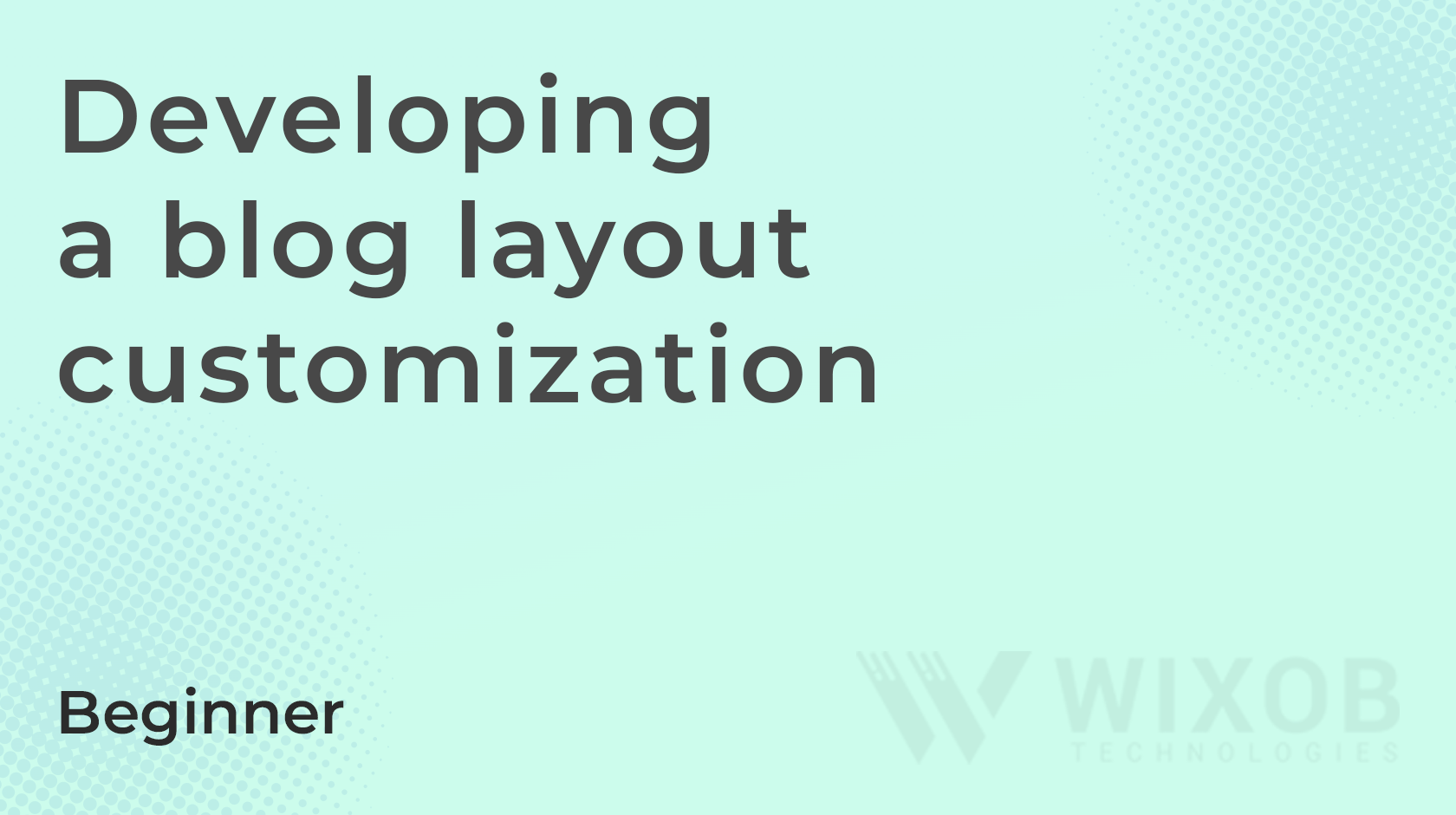In the realm of e-commerce, storytelling plays a pivotal role in engaging customers and fostering brand loyalty. Your Shopify blog serves as a platform for conveying your brand’s narrative and connecting with your audience on a deeper level. In this comprehensive guide, we’ll explore how to develop customized blog layouts using theme code customization techniques. By crafting unique and visually appealing layouts, you can captivate your audience and create memorable storytelling experiences.
Chapter 1: Understanding the Power of Blog Layout Customization
Before delving into the technical aspects, let’s examine why customizing your blog layout is crucial for your Shopify store. A well-designed blog layout not only enhances visual appeal but also influences the readability and navigability of your content. Custom layouts enable you to showcase your brand’s personality, organize content effectively, and guide visitors through your storytelling journey.
Chapter 2: Assessing Blog Layout Requirements
The first step in developing customized blog layouts is to assess your specific requirements and objectives. Consider the types of content you publish on your blog, such as articles, guides, case studies, and product updates. Determine the layout elements you want to customize, such as header styles, post formats, sidebar widgets, and footer sections. Identify opportunities to integrate branding elements and enhance user engagement.
Chapter 3: Designing Custom Blog Layouts
With a clear understanding of your blog layout requirements, it’s time to design the custom layouts that reflect your brand’s identity and storytelling goals. Sketch out wireframes or mockups illustrating how different layout elements will be arranged and styled within your blog template. Consider factors such as typography, color schemes, imagery, and overall visual hierarchy to create cohesive and aesthetically pleasing layouts.
<!-- Example HTML for a custom blog layout -->
<div class="blog-post">
<div class="post-header">
<!-- Header elements (title, date, author, etc.) -->
</div>
<div class="post-content">
<!-- Main content of the blog post -->
</div>
<div class="post-sidebar">
<!-- Sidebar elements (related posts, author bio, social sharing buttons, etc.) -->
</div>
</div>/* Example CSS for styling the custom blog layout */
.blog-post {
display: grid;
grid-template-columns: 2fr 1fr;
gap: 20px;
}
.post-header {
/* Styles for the post header */
}
.post-content {
/* Styles for the main content */
}
.post-sidebar {
/* Styles for the sidebar */
}Chapter 4: Implementing Custom Blog Layouts with Theme Code
Once you’ve designed the custom blog layouts, it’s time to implement them into your Shopify theme using theme code customization techniques. Utilize HTML, CSS, JavaScript, and Liquid to create the necessary functionality and integrate the custom layouts seamlessly into your blog template. We’ll explore step-by-step instructions for coding the custom layout elements and optimizing them for performance and responsiveness.
{% comment %}
Example Liquid code for implementing custom blog layouts in Shopify theme
{% endcomment %}
<div class="blog-post">
<div class="post-header">
<!-- Render post header elements dynamically -->
<h1>{{ post.title }}</h1>
<p>Published on {{ post.published_at | date: "%B %d, %Y" }}</p>
</div>
<div class="post-content">
<!-- Render main content dynamically -->
{{ post.content }}
</div>
<div class="post-sidebar">
<!-- Render sidebar elements dynamically -->
<ul>
<li>Related Posts</li>
<li>Author Bio</li>
<li>Social Sharing Buttons</li>
</ul>
</div>
</div>// Example JavaScript for enhancing blog layout functionality
// Add JavaScript functionality as needed for interactive elementsChapter 5: Testing and Optimization
After implementing custom blog layouts, it’s essential to thoroughly test their functionality and appearance across different devices, screen sizes, and browsers. Ensure that layouts are visually appealing, easy to navigate, and optimized for readability. Conduct usability testing to gather feedback from users and make improvements based on their insights. Optimize the custom blog layouts for performance and responsiveness, ensuring a seamless user experience across all devices.
Chapter 6: Conclusion
Developing customized blog layouts in your Shopify store allows you to create unique storytelling experiences that resonate with your audience and reinforce your brand’s identity. By leveraging theme code customization techniques and implementing visually appealing layouts, you can captivate your audience, drive engagement, and foster long-term relationships with your customers. With the guidance provided in this guide, you’ll be well-equipped to elevate your blog’s impact and create memorable experiences for your audience.

Leave a Reply